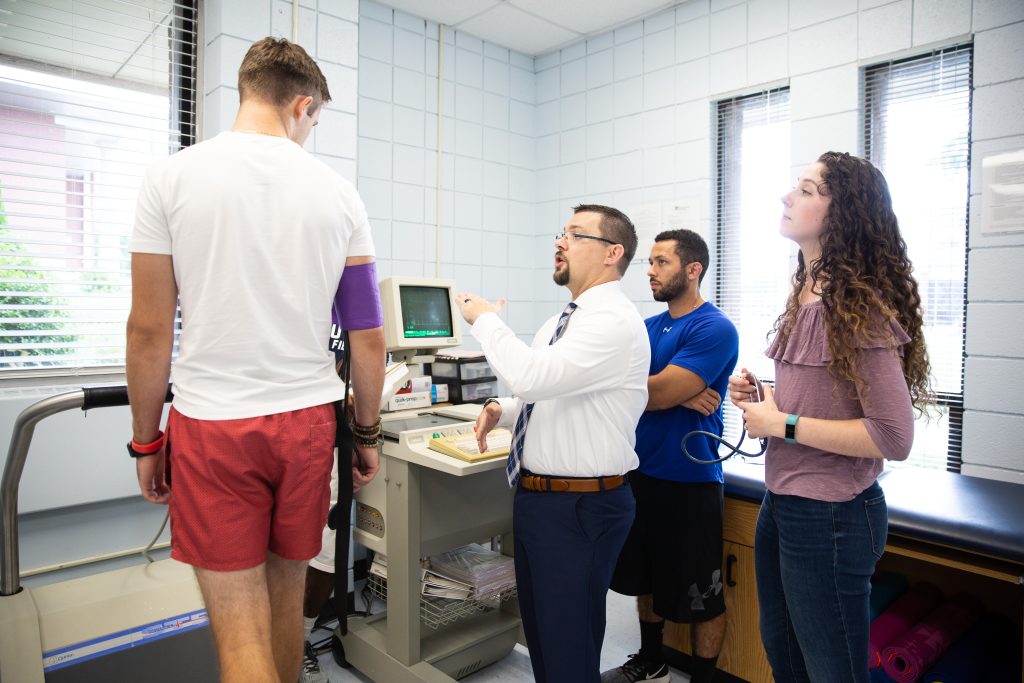
With the temperature rising, the sun shining, and people getting outside more, it’s hard to deny that spring is officially in full swing–and that means spring sports! But as our athletes come out of their “winter slumber,” athletic trainer Michael Nolan says it’s important to consider a few things in order to stay healthy and avoid injury.
As a long time athletic trainer (AT) and current Doctor of Philosophy in Health Sciences student here at Rocky Mountain University of Health Professions, Nolan has seen this transition many times and knows what athletes can do to ensure a healthy spring season. Here are his tips for spring sports success:
Warm-up consistently: Jumping right into activity can be dangerous. Before activity, you should always take time to warm up correctly. “Stretch muscles and allow 30 seconds to 2 minutes in each stretching position. Once the muscles are properly stretched, warm up with jumping jacks, walking, or another form of dynamic warm-up for 5-10 minutes.”
Use proper equipment: One part of being safe includes finding the right equipment for you or your child’s sport. Finding the right clothing and equipment can help you reach your highest potential during physical activity and prevent injuries. “Selecting the proper equipment such as shoes, clothing, a helmet for you or your child’s specific sport, and using the equipment properly for each activity is important. Consider replacing poorly fitting, worn, or old equipment from a previous year.
Train and condition: If you have not been actively keeping up your physical activity this winter, don’t try to jump right back into the same level of intensity that you have done before. It’s all about working up to it and using progression. “For example, baseball and tennis players can work on shoulder strengthening and flexibility exercises and golfers can work on lower back flexibility and stretching before returning to the sport they love.”
Eat and sleep right: What we eat plays a big role in how we perform. Make sure that you are eating healthy foods and not skipping meals. “Be sure to get enough complex carbohydrates, which provide energy and sufficient protein to build muscle and help perform at your best.” In addition to eating right, not getting enough sleep will affect your performance. “Getting enough sleep is important for injury prevention because a well-rested body will be less fatigued, decreasing the likelihood of getting injured.”
Stay hydrated and wear sunscreen: A dehydrated body is fatigued and injury-prone. The following are symptoms of heat exhaustion: muscle cramps, severe sweating, cold or clammy skin, a fast/weak pulse, weakness, nausea, vomiting, and fainting. “Anyone displaying these symptoms should be removed from activity, taken to an area where it is cool, and contact a medical professional. If heat exhaustion is not recognized, the person could progress to heat stroke which is a medical emergency.” In addition, never forget the importance of wearing proper sunscreen to prevent skin injuries and decrease the risk of cancer.
Be aware of your body: Ultimately, it’s important to listen to your body. “Muscles that are fatigued lack the protective mechanisms in the body and may increase your risk for injuries. Rest and take a break. Use this break time to re-hydrate.”
As you spring into the sports season as the days get warmer, remembering these tips will help athletes achieve peak performance again. And staying healthy and injury-free is the first step in reaching your full potential in whatever sport you do.
Photos courtesy of Michael Nolan, Missouri Baptist University.



